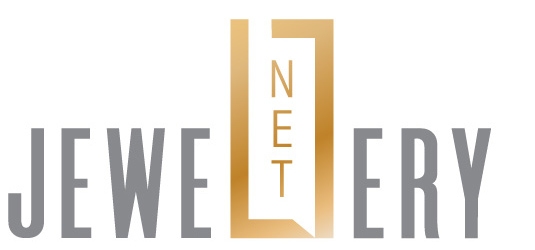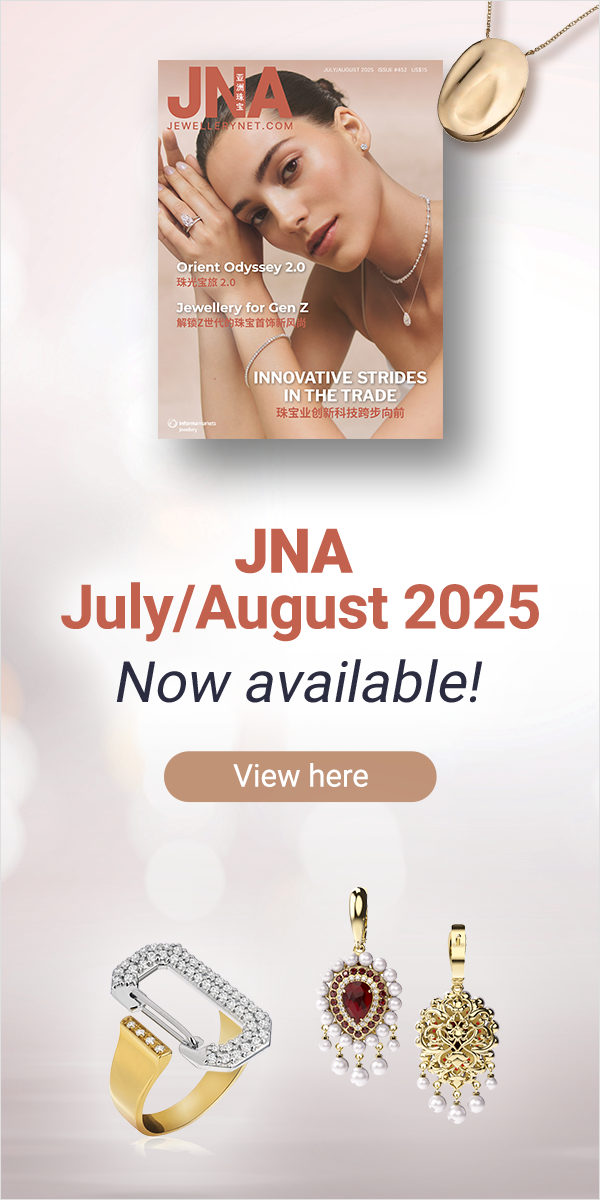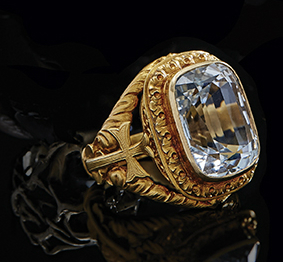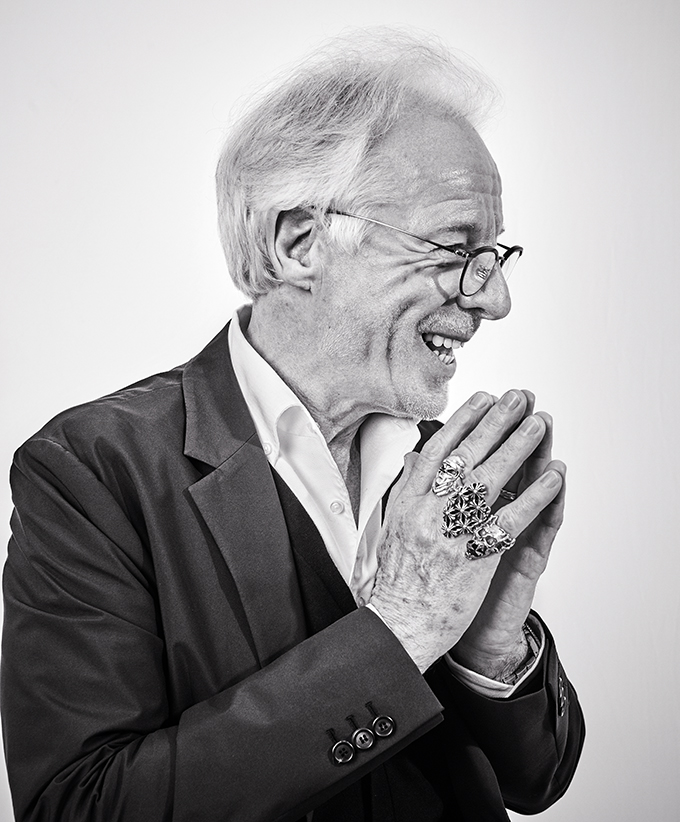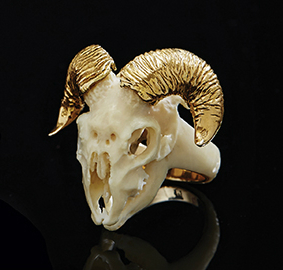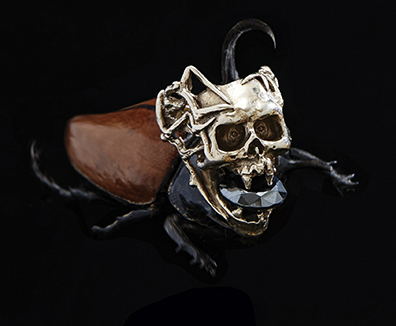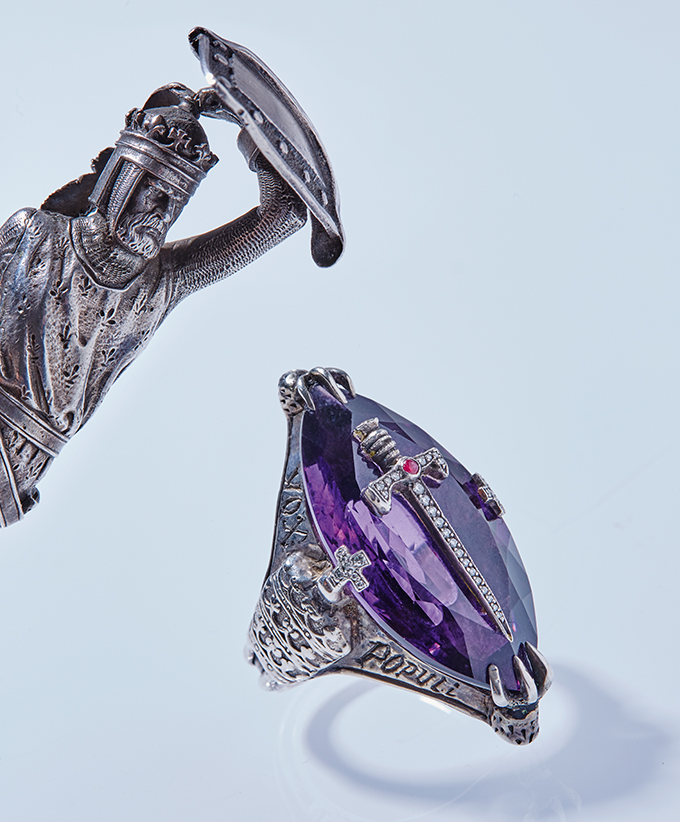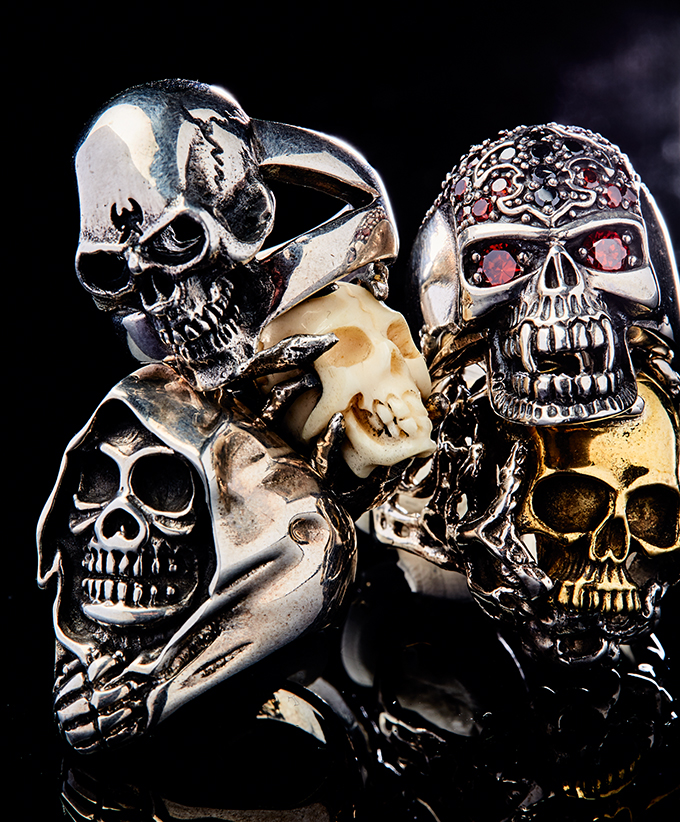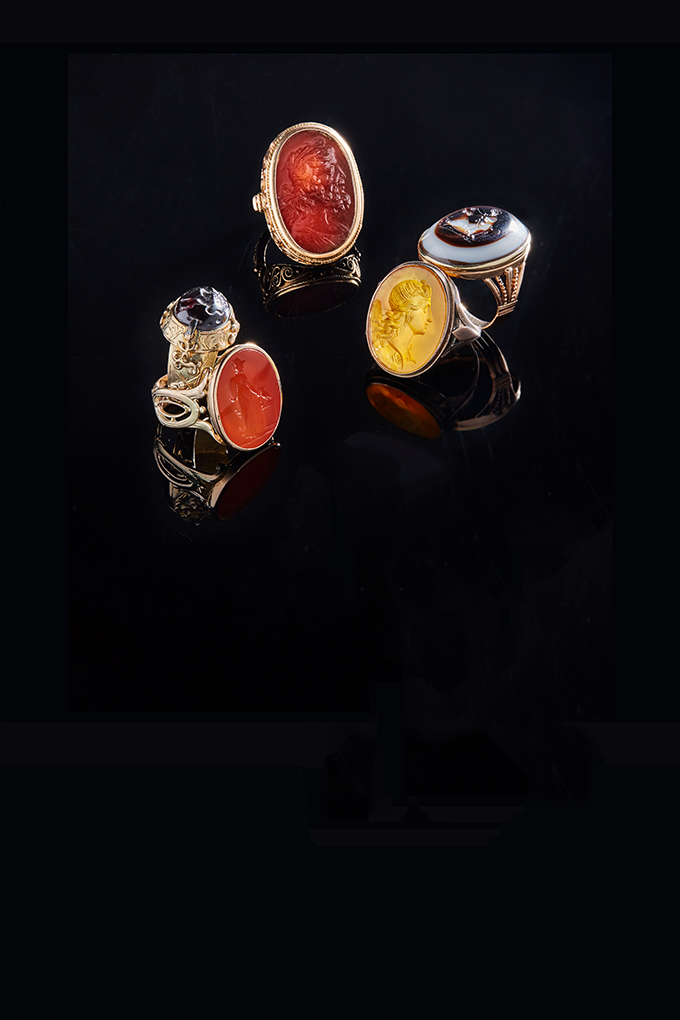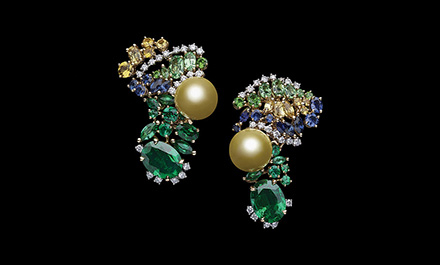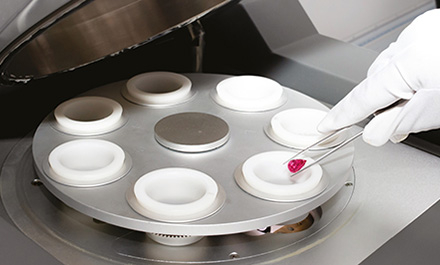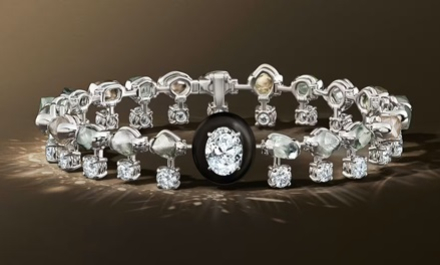Men’s rings are now a fashion phenomenon. In Paris, antique dealer Yves Gastou presented a fabulous selection of men’s rings at the L’École des Arts Joailliers. The collection traces the interesting history of this symbol of masculinity through several themes ranging from neo-classicism to chivalry, Gothic style and vanities.
By Philippe Bouasse
We should talk more often about men’s jewellery. Long associated with rock stars and royalty, jewellery for men has risen to become a fast-growing market segment, with global sales reaching about US$15 billion out of an estimated US$310 billion in overall jewellery sales, according to recent studies.
And even if watches remain by far the most popular luxury accessory for men, many brands and designers are now interested in jewellery for men and are redoubling their efforts to meet the demands of a wider and more curious clientele that is sensitive to the latest trends.
In this context, the exhibition “Men’s Rings” from the Yves Gastou Collection presented for the first time in Paris is timely. It was a resounding success, featuring 500 pieces ranging from rings of 17th century Venice doges to American biker rings of the 1970s, rings from ancient Egypt, vanity pieces of the 19th century and 18th century enamel rings by contemporary artists.
What inspired you to showcase part of your men’s rings collection?
Yves Gastou: That story is a fairy tale. I started collecting rings as a teenager and today, I own more than a thousand pieces. It all began with the idea of publishing a book around this collection. French publisher Albin Michel was interested so we worked with Benjamin Chelly, who’s a remarkable photographer. L’ÉCOLE, School of Jewelry Arts, which is supported by Van Cleef & Arpels, heard about the project. I then met its director, Marie Vallanet-Delhom, who, having seen about 30 rings from my collection, immediately spoke to Van Cleef CEO Nicolas Bos. Both were fascinated by this unique jewellery collection of extraordinary diversity and eclecticism. They decided to invest in this project by supporting not only the book but also the exhibition and its catalogue. It was extraordinary.
How did you become a collector of men’s rings?
Gastou: My ring collection tells the story of my life. I am from Southwest France, near the city of Carcassonne. It is a region with castles dating back to the Middle Ages. I’ve always been fascinated by the fantasy associated with this period – the armours, the blazons, the religious paintings. The androgynous figures of Joan of Arc or San Sebastian also captivated me. I’ve always had an attraction for the jewels in my mother’s closet. She had impeccable taste. She gave me my first ring when I was 7 or 8 years old, with my initials. When I was 12, I remember a procession with the bishop of Narbonne wearing an episcopal ring that fascinated me. Subsequently, I worked at an antique dealer. This allowed me to explore the castles. I bought my first ring at the age of 15 and I have never stopped since.
Men seem more comfortable with wearing jewellery now. What do you think is the reason?
Gastou: We are witnessing a real social phenomenon, with young men of 18 to 20 years old being able to better assume their feminine side by inventing androgynous looks; often wearing earrings, tattoos, sophisticated clothes and rings too. But older men also wear bracelets and signet rings, etc. We should remember that men have been wearing jewellery long before, from ancient Egypt or Rome to the Renaissance era, the maharajas of India and the dandies of the 19th century. The ring is a symbol of power and sensuality, especially when touched and passed on one’s finger. It is a jewel that is offered to celebrate a relationship. When handed over, it arouses many passions and conflicts in families, as I have often witnessed.
There are no rings originating from Asia in your collection, for example those from ancient China.
Gastou: As a collector, I don’t scour auction houses around the world or spend time on the Internet looking for rare pieces. My collection is more the fruit of meetings, travels or chance. Ancient jewellery pieces from Asia have become extremely rare and expensive, especially pieces with jade. But I bought a huge quantity of rings in Thailand, a hundred extraordinary silver rings from the early 20th century mounted with Chinese coins or figures of deities.
If only one ring could be left in your collection, what would that be?
Gastou: That is a difficult question because a number of rings in my collection have sentimental value; some were even offered to me. To answer your question, it might be the one on the cover of the book – a vanity ring by Dutch artist André Lassen with a white gold bull skull and a hematite in brilliant cut. Or perhaps a sublime bishop ring.
About the author
Philippe Bouasse is a multi-awarded French jewellery designer and branding consultant. He was trained at École de la Rue du Louvre, a famed jewellery school in Paris. He is the founder of Studio Devarieux (Paris and Hong Kong). He is also a writer, lecturer, teacher and avid traveller.
